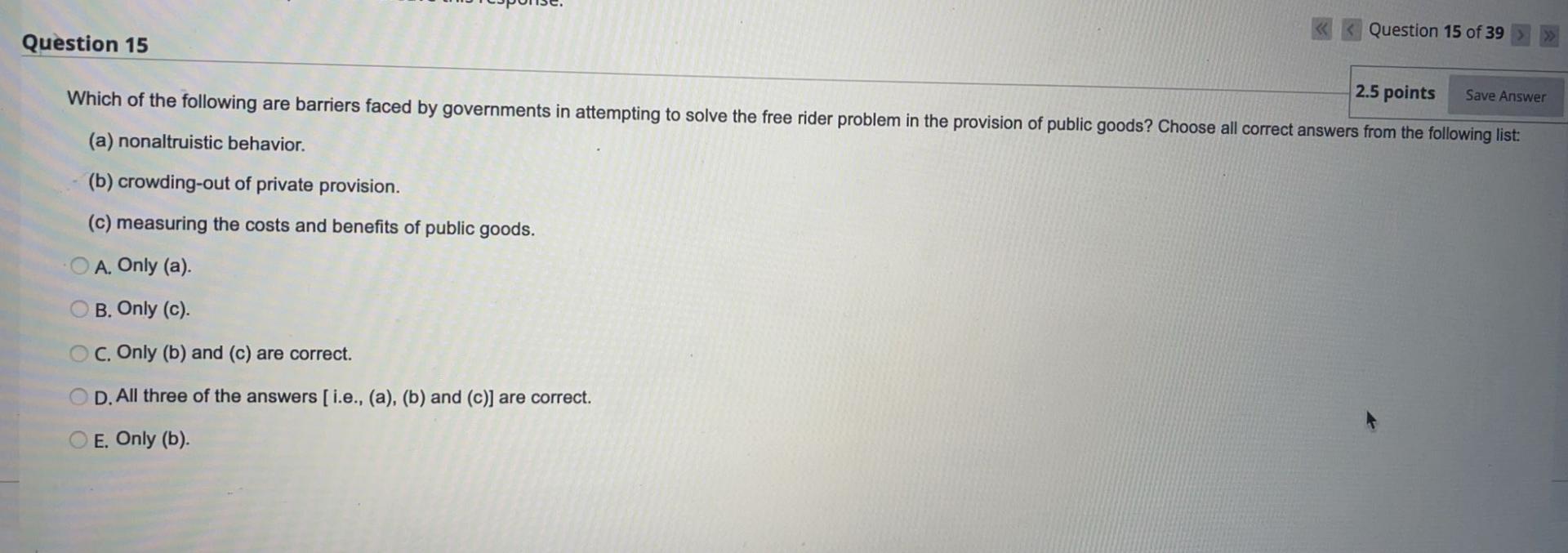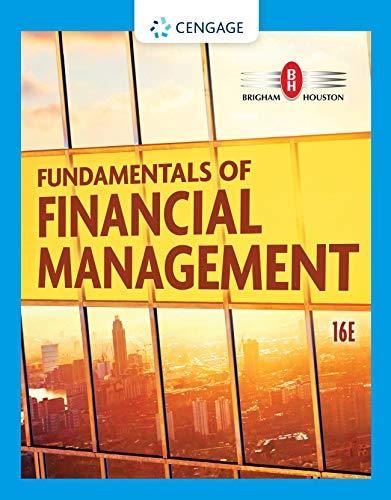Answered step by step
Verified Expert Solution
Question
1 Approved Answer
please solve it in 10 mins I will thumb you up Question 9 2.5 points Save Answ Assume that a college student spends her income






please solve it in 10 mins I will thumb you up
Question 9 2.5 points Save Answ Assume that a college student spends her income on Coke and Snickers. The price of a Snickers candy bar is $0.50, and a can of Coke is $0.75. If she has $20 of income, she could choose to consume A. 24 Snickers bars and 12 cans of Coke. B. 12 Snickers bars and 20 cans of Coke. C. 22 Snickers bars and 14 cans of Coke. D. 13 Snickers bars and 18 cans of Coke. Question 8 Question 8 of 39 Suppose a consumer values a certain 19-inch television set at $150, and the seller is unwilling to sell the set for less than $200. What price will lead to an efficient transaction between the potential buyer and seller? 2.5 points Save Answer A. No price will lead to an efficient transaction B. any price greater than or equal to $150 and less than or equal to $200 C. Any price greater than $0 and less than $150 D. Any price greater than $200 E. A price of $0 Question 13 Which of the following is true when a consumer is maximizing her utility? O A. None of the other answers is correct. B. She consumes at the point where her budget constraint is tangent to her indifference curve. OC. She consumes where the budget constraint intersects the midpoint of her indifference curve. D. She consumes at the point where the slope of her indifference curve is zero. E. She consumes halfway between the two intersections of her budge constraint and indifference curve. Question 15 of 39 Question 15 Which of the following are barriers faced by governments in attempting to solve the free rider problem in the provision of public goods? Choose all correct answers from the following list: 2.5 points Save Answer (a) nonaltruistic behavior. (b) crowding-out of private provision. (c) measuring the costs and benefits of public goods. A. Only (a). B. Only (c). C. Only (b) and (c) are correct. D. All three of the answers [i.e., (a), (b) and (c)] are correct. E. Only (b). Question 14 The equity-efficiency trade-off means that the result of obtaining in equality is also to obtain in the so-called size of the pie. A. None of the other answers is correct. OB. An increase; a decrease C. No change ; An increase D. No change; a decrease E. A decrease; a decreaseStep by Step Solution
There are 3 Steps involved in it
Step: 1

Get Instant Access to Expert-Tailored Solutions
See step-by-step solutions with expert insights and AI powered tools for academic success
Step: 2

Step: 3

Ace Your Homework with AI
Get the answers you need in no time with our AI-driven, step-by-step assistance
Get Started


